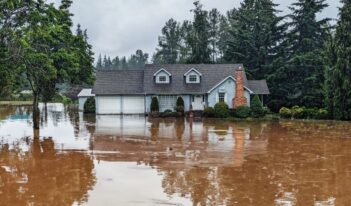
The lack of regulation on animals’ greenhouse gas emissions opens the door for climate change litigation.
When buying a cheeseburger, the consumer might not realize that it actually costs society more than the price listed on the menu. In reality, each patty also bears unpriced costs from greenhouse gas emissions that exacerbate climate change.
Just like consumers, attorneys also might be overlooking these costs, writes Daniel E. Walters, a professor at the Penn State University Law School. The animal agriculture industry contributes nearly 20 percent of all greenhouse gas emissions in the United States, but so far environmental lawyers have only sued companies in other sectors of the economy for their contributions to climate change.
Walters argues that climate change lawyers should turn their attention to the animal agriculture industry. In fact, he says suits against agricultural firms could be more successful than those that have been brought against energy or transportation companies because Congress has failed to regulate greenhouse gas emissions from animals.
According to Walters, attorneys that have attempted to use federal public nuisance law to combat climate change have had limited success because of a concept known as “displacement.” Walters explains that displacement means people cannot bring a federal nuisance claim when a federal statute has already addressed the issue.
Walters describes how the U.S. Supreme Court in American Electric Power v. Connecticut used displacement to shield energy and transportation companies from federal public nuisance suits. Specifically, he notes that the Supreme Court found that Congress delegated authority to the U.S. Environmental Protection Agency (EPA) to regulate these industries through the Clean Air Act. As a result, the Court unanimously held that the Clean Air Act “displaces any federal common law right to seek abatement of carbon-dioxide emissions from fossil-fuel power plants.”
Due to displacement, federal public nuisance suits against greenhouse gas emitters face an uphill battle, Walters notes. A federal court in California recently rejected a claim against a fossil fuel company because “Congress has vested in the EPA the problem of greenhouse gases and has given it plenary authority to solve the problem.”
But Walters points out that the Clean Air Act says next to nothing about EPA regulating emissions from the animal agriculture industry. He contends that this silence could mean that courts will allow a public nuisance suit against the animal agriculture industry to go forward.
Courts, however, might interpret American Electric as holding that the Clean Air Act displaces federal public nuisance claims for all greenhouse gas emitters. Walters argues that, even with this broad interpretation, litigants could still prevail by showing that “EPA has no plans to attempt to regulate animal agriculture emissions.” In fact, such an interpretation could make EPA susceptible to litigation for failing to regulate animals’ emissions, he notes.
Under either interpretation, Walters reasons that bringing a lawsuit presents a win-win for climate change litigants. Courts could either allow the suit to proceed or rule that the Clean Air Act actually does regulate animal agriculture emissions, allowing litigants the opportunity to sue EPA for not acting on its authority.
Forcing an agency to act through litigation does have some precedence. Walters highlights Massachusetts v. EPA, where the Supreme Court compelled EPA to use the Clean Air Act to confront greenhouse gas emissions from automobiles.
Senator Elizabeth Warren (D-Mass.), however, recently argued that people should focus on fossil fuel companies, which are the largest emitters of greenhouse gases. She stated that fossil fuel companies want “to stir up a lot of controversy around your light bulbs, around your straws, and around your cheeseburgers.” But she thinks fossil fuel companies should be the focus since they contribute 70 percent of the world’s carbon emissions.
Although fossil fuel sources primarily contribute to global carbon emissions, Walters says that “advocates have often overlooked the low-hanging fruit that is the highly inefficient and harmful reliance on meat.” According to Walters, suing the animal agriculture industry would operate as a gap-filling approach, targeting an area that produces “a surprising amount of greenhouse gas emissions.”
Livestock production alone contributes almost a fifth of all global greenhouse gas emissions, Walters explains. In addition, he argues that emissions from the animal agriculture industry will only get worse as the world is expected to double its meat consumption by 2050.
Whether a suit would be successful after overcoming the displacement hurdle depends on a range of complexities, admits Walters. Still, he thinks that the right lawsuit could, at the very least, bring greater public awareness to the inefficiencies of the meat market and could help curb consumer behavior.



